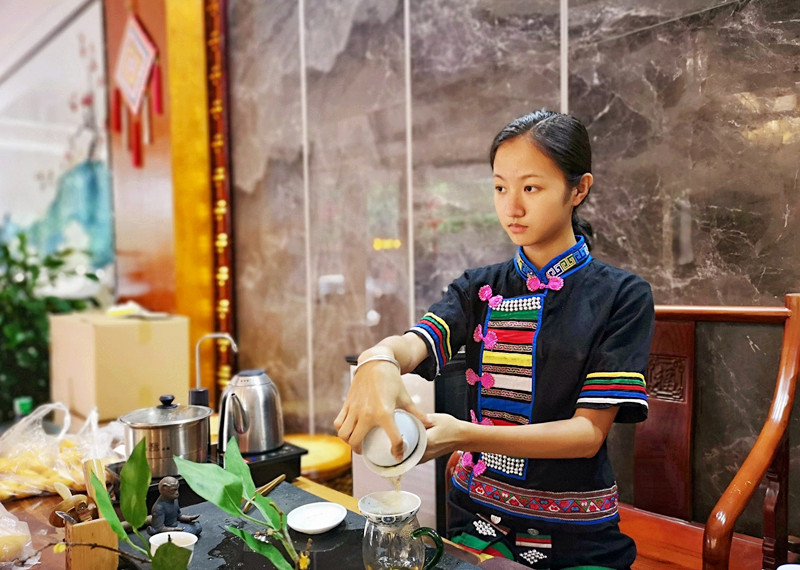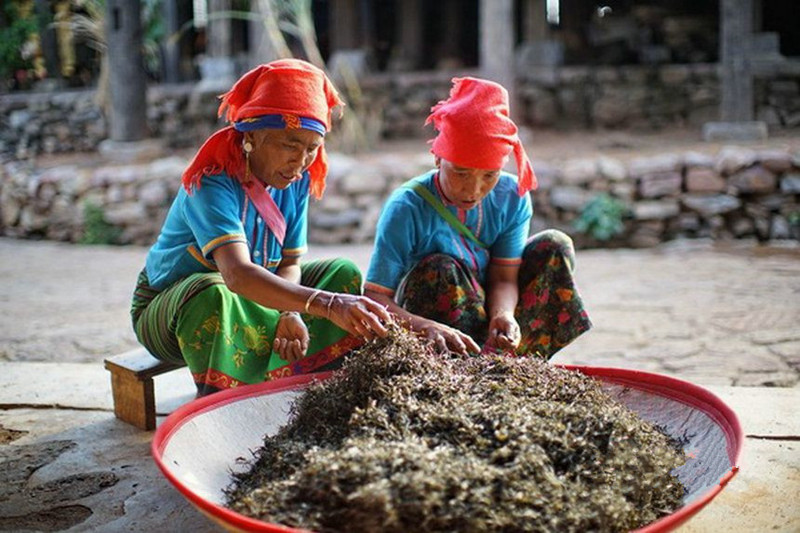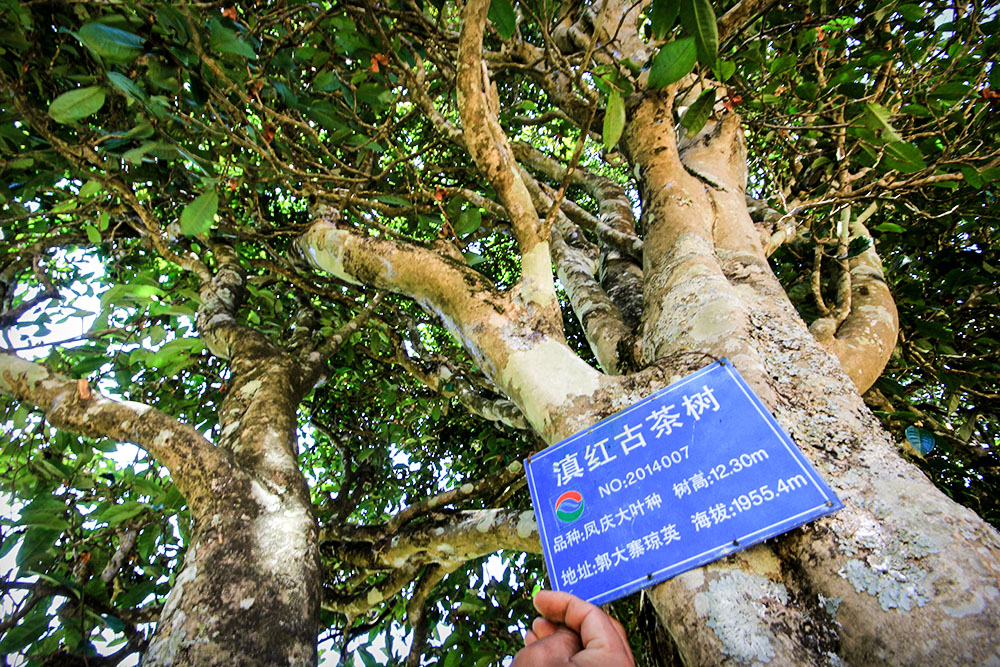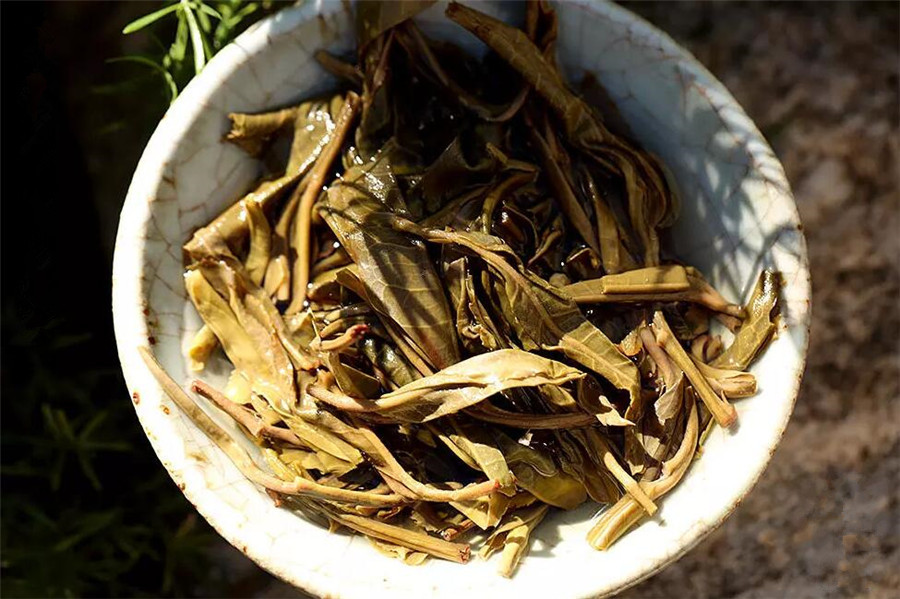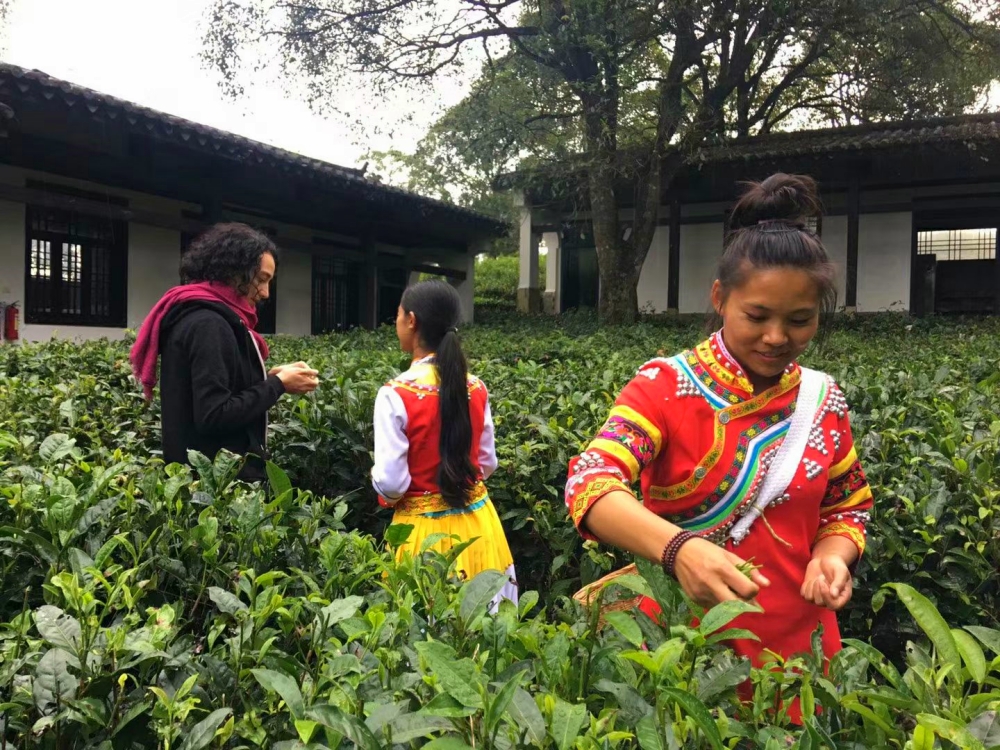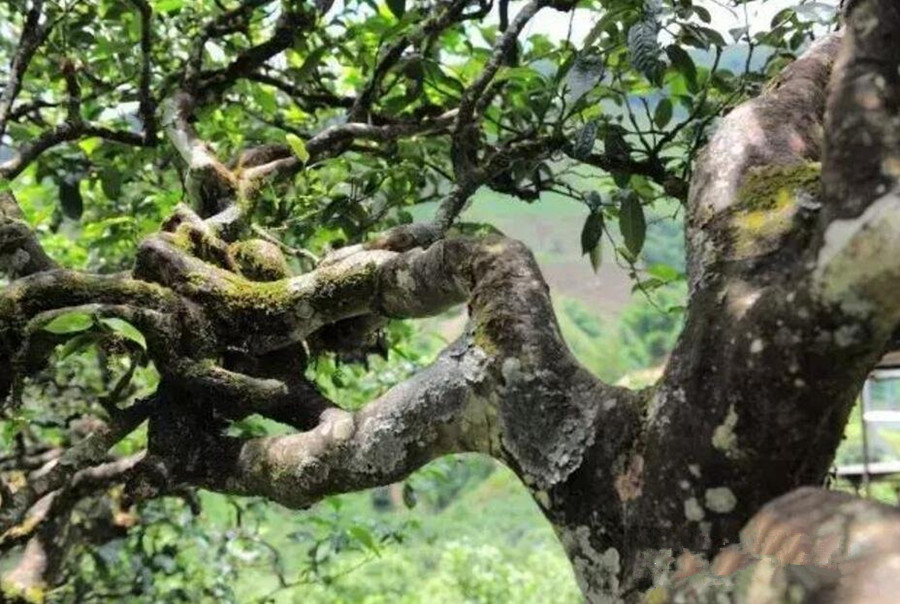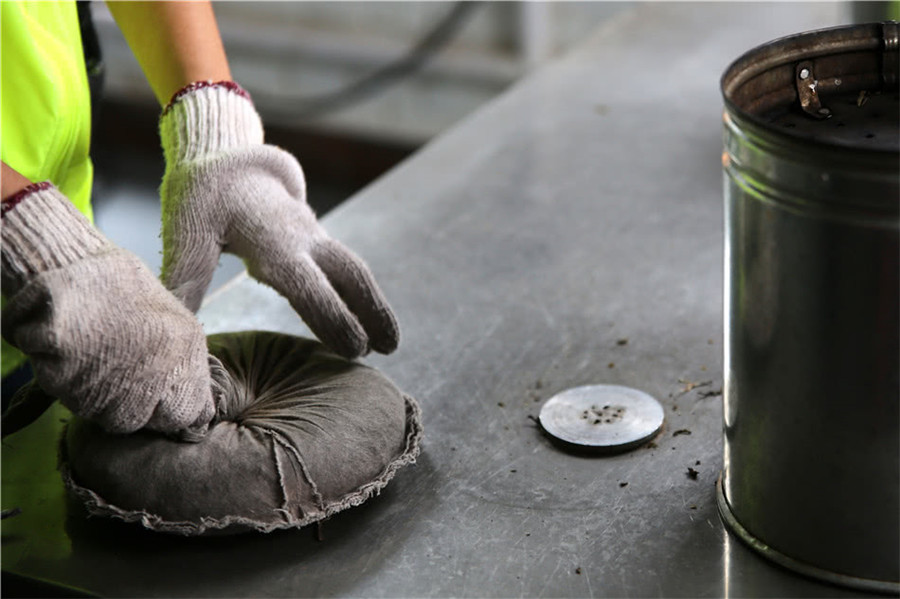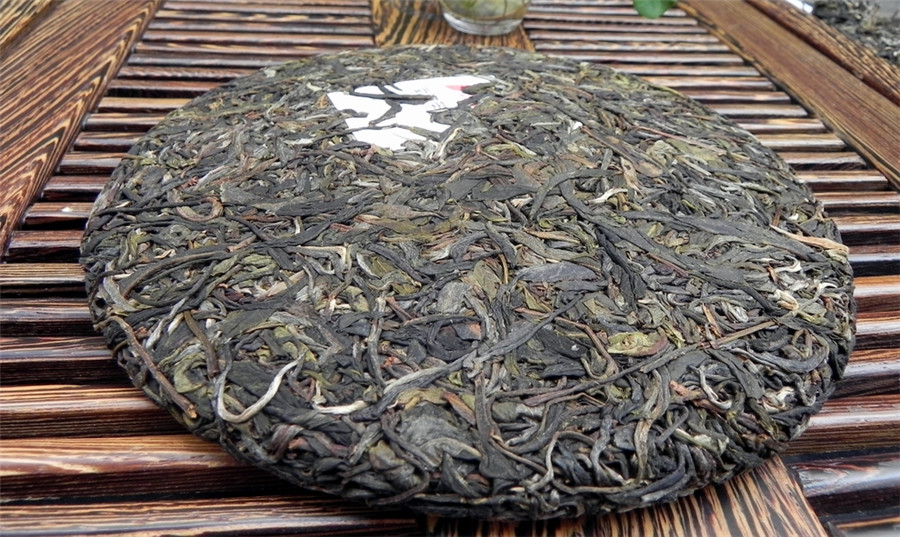
Pu-erh Tea
What is Puer Tea?
You’ve probably heard of the true teas such as green, white and oolong teas that are made from the Camellia sinensis plant, but you may not have heard of pu-erh tea. Pu’er tea or pu-erh tea, known as “black tea” in the Far East part of the world, is a variety of fermented tea produced in the Yunnan and is named after the market town (now Pu’er City) in which it was first developed. Puer tea is made from the broad leaf variety (camellia sinensis var. assamica) of the tea plant camellia sinensis which are ancient trees with mature leaves that are said to be between 500 and 1000 years old. These trees are usually grown the Southwest region of Yunnan China, believed to be the birthplace of tea. Over 1200 years ago, the people of the area began cultivating “tea gardens,” open areas, mostly in the high mountains, where tea trees are grown, coexisting with the native plants and ecology. Although they can be harvested year-round, the opportune time to harvest is in mid-spring. Various conditions and environmental factors can impact the flavor profile of puer, resulting in a rich experience for the tea drinker’s palate of this bold tea that can be smooth, fruity, peaty, grassy, musky, herbal and earthy.
While most teas, by and large, are best consumed soon after production to retain both their flavor and antioxidant value, Puer can be aged and refined like wine. It is post-fermented, which means that the tea leaves go through a microbial fermentation process after they have been dried and rolled, causing the leaves to darken and change in flavor. This process allows the teas to not only improve with age like a fine wine, but many pu-erhs are able to retain their freshness for up to fifty years! Depending on the conditions and environment of aging, the taste can transform through various stages of being fruity, nutty, grassy, herbal and earthy.
History of Puer Tea
Puer tea has a recorded history of more than 1,700 years. Trade in Pu-erh tea began in the Tang Dynasty, became famous during the Ming Dynasty and was popularized in the Qing Dynasty. As the fame of the tea spread through trade and traveling merchants, its popularity increased in neighboring regions as well as distant kingdoms. Puer was transported by mules and horses in long caravans along established routes that became known as the Tea Horse Roads. By the end of the Ming dynasty (1368 to 1644) and early part of the Qing dynasty (1644 to 1911) the production and export of Puer tea had reached a historical peak. Cakes and bricks from the Six Famous Tea Mountains of Xishuangbanna and Simao were being transported throughout China, Japan, Tibet, Southeast Asia, and on to the west along common trade routes.
More about The History of Puer Tea
Puer Tea Today
After the establishment of the People’s Republic of China in 1949, renewed efforts were made to revive Puer tea production by exploring new areas for tea cultivation, opening new factories, and establishing special tea-research institutes. Today, pu-erh continues to be regarded as a highly prized commodity. Even in modern society, a well preserved pu-erh still maintains its value and remains a household treat.
Puer Tea Plantation Areas in Yunnan
Yunnan, renowned for their climates and environments, which not only provide excellent growing conditions for Puer tea, but also produce unique taste profiles in the produced Puer tea. Pu’er tea is produced in almost every county and prefecture in the province. The best known Puer tea areas are the Six Famous Tea Mountains, a group of mountains in Xishuangbanna. Many other areas of Yunnan also produce Puer tea. Yunnan prefectures that are major producers of Puer tea include Lincang, Dehong, Simao, Xishuangbanna, and Wenshan. Region is one factor in assessing a Puer tea, and Puer from any region of Yunnan is as prized as any from the Six Famous Tea Mountains if it meets other criteria, such as being wild growth, hand-processed tea.
More about Tea plantations in Yunnan
Processing Methods of Puer Tea
What separates pu-erh from the other tea types is its processing–it’s not important which tea plant cultivar produces the leaves. Puer tea is typically made through the following steps:
- Green/raw 熟普: sun fixation杀青 – rolling 揉捻 – sun drying 晒干
- Dark/ripe 熟普: sun fixation 杀青 – rolling 揉捻 – Wo Dui (piling) 渥堆 -sun drying 晒干
- Aging: green and dark pu-erh can be compressed/shaped into cakes and aged. Both sheng and ripe pu’er can be shaped into cakes or bricks and aged with time.
More about Aged Pu-erh Tea
Varieties of Puer Tea
Varieties of Puer tea can be defined accoding to the processing methods, shapes of finished products, storages, nature of the tea plantations and types of the tee trees. Often Puer teas are referred to as aged teas. This is because, unlike white tea, green tea, black tea, and most oolong teas, which are highly perishable and have a short shelf life, well-made puer teas may be stored and aged for years of enjoyment.
Puer Tea Varieties by Processing Methods
Depending on the way Puer tea was processed, it can be divided into two types: raw Puer tea and ripe Puer tea. Both Ripe Pu-erh and Raw Pu-erh teas are made from a sun-dried tea called Saiqing Mao Cha. After fermentation and roasting, pu-erh tea is aged, often for many years, resulting in its dark color and bold, mellow flavor.
- Raw (sheng) Puer Tea: Raw Pu-erh is made from non-fermented green tea leaves that were picked, quickly roasted, sun-dried and then steamed to be compressed into round disks called cakes. After which the cakes are aged until the tea’s taste is properly transformed.
- Ripe (shou) Puer Tea: Ripe Pu-erh is made from black tea – the one that is fermented. At first, shou pu-erh goes through the exact same steps as the sheng pu-erh. However, at the stage of producing the cakes it undergoes a procedure called ‘wet piling’.
Read More:
Puer Tea Varieties by Shapes
Puer tea is compressed into a variety of shapes as follows. In recent years, it is also compressed into the hollow centers of bamboo stems or packed and bound into a ball inside the peel of various citrus fruits.
| Common Name | Description |
| Bing/Cake/Disc Tea (饼茶) | A round, flat, disc or puck-shaped tea, the size ranges from as small as 100g to as large as 5 kg or more, with 357g, 400g, and 500g being the most common. |
| Tuocha Tea (沱茶) | A convex knob-shaped tea, its size ranges from 3g to 3 kg or more, with 100g, 250g and 500g being the most common. |
| Brick Tea (砖茶) | A thick rectangular block of tea, usually in 100g, 250g, 500g and 1000g sizes; Zhuancha bricks are the traditional shape used for ease of transport along the ancient tea route by horse caravans. |
| Square Tea (方茶) | A flat square of tea, usually in 100g or 200g sizes. Characters, such as brand name are often pressed into the square, as in the example illustrated. |
| Dragon Pearl (龙珠) | A small ball-shaped or rolled tea, convenient for a single serving. Generally balls contain between 5 and 10 grams of compressed material. |
| Gold Melon (金瓜) | Its shape is similar to Tuocha, but larger in size, with a much thicker body decorated with pumpkin-like ribbing. |
How to Drink Puer Tea?
Besides the tea wears and quality of water, Puer tea brewing tricks can also effect the taste of the tea. Moreover, brewing it correctly can aid in enjoyment. First, you’ve got to get some leaves–using a knife or pick, break some leaves off of the cake as gently as possible, preferably from the side. The fewer broken leaves, the better the tea will taste. Traditional Chinese Gong Fu (to be described in a future post) preparation is ideal for Pu-erh, meaning that the tea leaves are only immersed in hot water for a short time before the tea is poured into another container. The best Pu-erh teas can be steeped up to 10-12 times before beginning to lose their flavor.
More about How to Drink Puer Tea
Where to Buy Puer Tea in Yunnan?
Tea Markets in Yunnan are thriving due to the booming development of Puer tea. If you plan to buy Puer tea in Yunnan, and wanna have a wide choice of tea products, tea markets in Yunnan are your good choices. According to the tea production areas, Kunming, Pu’er, Lincang and Xishuangbanna have the most concentrated tea trading centers, such as Kangle Wholesale Tea Market, Yunnan Jinshi Wholesale Tea Market, Yunnan Puer Tea Trading Center and Menghai Tea Market , etc.
Read More
Keep Reading
- Puerh Tea Price
- Puerh Tea Taste
- Pu Erh Tea Caffeine
- King of The Tea Tree
- Yunnan Puer Tea Benefits
- The Most Expensive Puerh Tea
- Visum liquidambaricolum Hayata on Tea Trees
- Tea Ancestor Hall of China Puer Tea Exhibition Garden

 7 Days GolfingTour
7 Days GolfingTour
 8 Days Group Tour
8 Days Group Tour
 8 Days Yunnan Tour
8 Days Yunnan Tour
 7 Days Shangri La Hiking
7 Days Shangri La Hiking
 11 Days Yunnan Tour
11 Days Yunnan Tour
 6 Days Yuanyang Terraces
6 Days Yuanyang Terraces
 11 Days Yunnan Tour
11 Days Yunnan Tour
 8 Days South Yunnan
8 Days South Yunnan
 7 Days Tea Tour
7 Days Tea Tour
 8 Days Muslim Tour
8 Days Muslim Tour
 12 Days Self-Driving
12 Days Self-Driving
 4 Days Haba Climbing
4 Days Haba Climbing
 Tiger Leaping Gorge
Tiger Leaping Gorge
 Stone Forest
Stone Forest
 Yunnan-Tibet
Yunnan-Tibet
 Hani Rice Terraces
Hani Rice Terraces
 Kunming
Kunming
 Lijiang
Lijiang
 Shangri-la
Shangri-la
 Dali
Dali
 XishuangBanna
XishuangBanna
 Honghe
Honghe
 Kunming
Kunming
 Lijiang
Lijiang
 Shangri-la
Shangri-la
 Yuanyang Rice Terraces
Yuanyang Rice Terraces
 Nujiang
Nujiang
 XishuangBanna
XishuangBanna
 Spring City Golf
Spring City Golf
 Snow Mountain Golf
Snow Mountain Golf
 Stone Mountain Golf
Stone Mountain Golf

